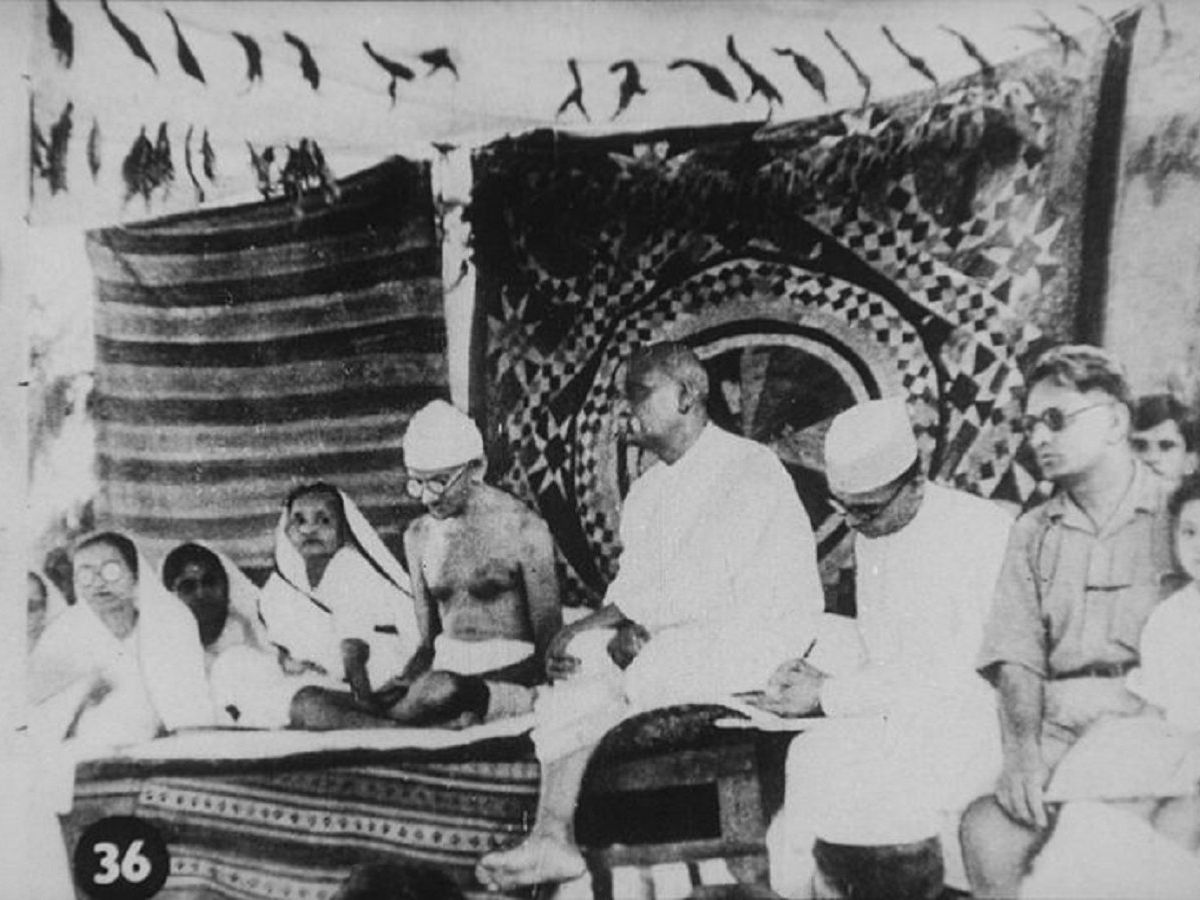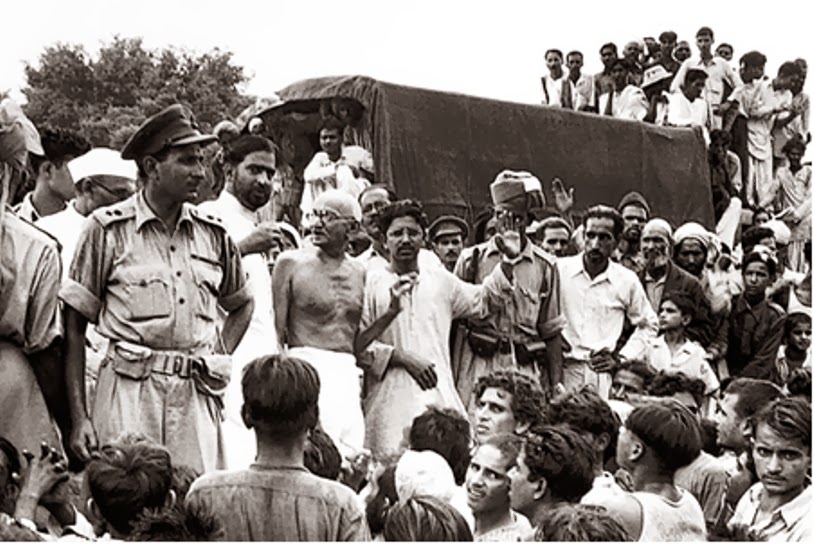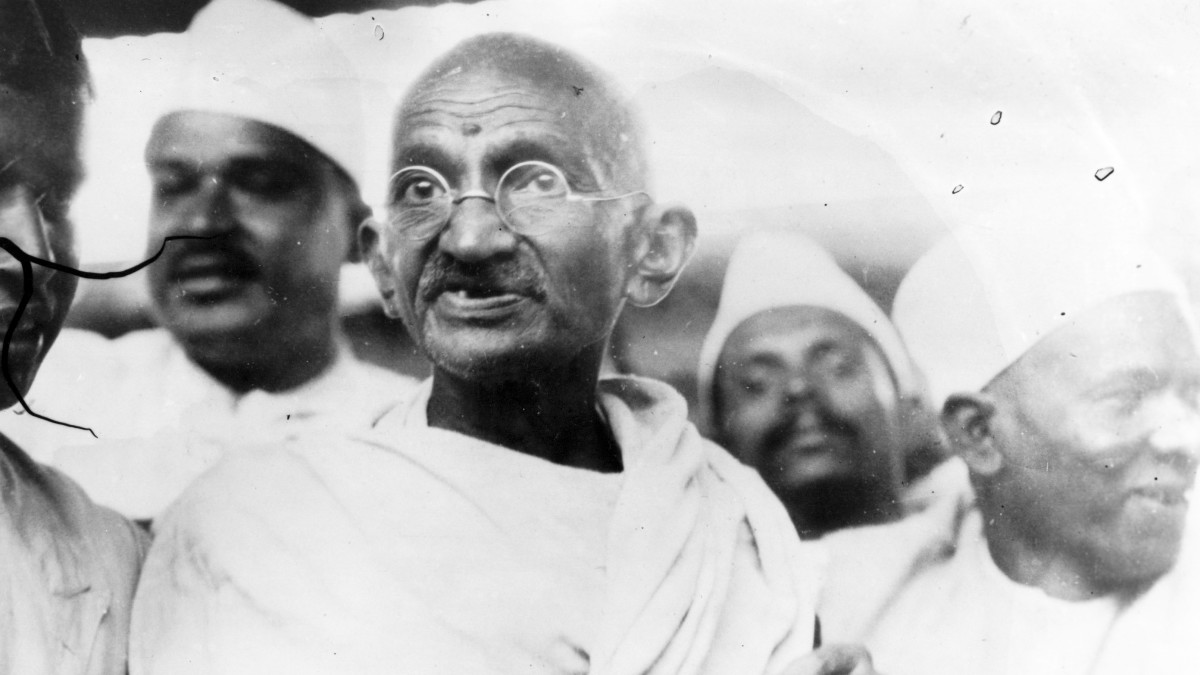In the history of mankind, several great leaders emerged to guide humanity during the different time periods in a long list of such great leaders name Mahatma Gandhi came foremost. He was living Saint. His life was an inspiration for & despite the death of Mahatma Gandhi his ideas are still echoing in the heart and minds of millions throughout the world.
Mahatma Gandhi was the foremost leader of the Indian National Movement. It landed masses from front till the time he was alive. He was like the “One man army” & left a listening impact on entire humanity. The rise of Gandhiji as the supreme leader of the National Movement marked the beginning of a new phase in the history of Indian’s struggle against British Rule. It was the pressure built by the Gandhian movement that forced the British to leave India in 1947.
Controversy about the Rise of Mahatma Gandhi
The rise of Mahatma Gandhi as the supreme leader of the National Movement has been explained differently by different sections of scholars. The controversy about rising of Gandhiji was triggered by a comment of British historian Judith Brown.

He emphasized that the rise of Gandhiji was the outlook of the high-level political game; he captured leadership by manipulating prevailing circumstances. This colonial interpretation of the rise of the great leader was supported by many British scholars who cause such interpretation in tune with the needs of the British colonial empire.
Closer examination of circumstances leading to the rising of Mahatma Gandhi reveals that he didn’t emerge suddenly from out of anywhere but in reality, his rise was the outlook of a long process of a gradual evolution spanning across more than two decades.
Factors responsible for the Rise of Mahatma Gandhi
The success of Gandhian experience. The South Africa movement that Gandhiji had led, already made him a national hero for the country. Much before Gandhiji put his foot on Indian soil in 1915, his reputation as a great leader had reached every corner of India.
Thousands used to flack to the bus stand to have a glimpse of great soul whenever Gandhiji visited any part of India. Gandhiji was not required to start his political journey in India from zero. When Mahatma Gandhi returned from South Africa in 1915 by that time both moderates & extremists had lost much of their mass appeal.

Moderates were too weak to be effective & extremists were largely sounding hollow. These leaders had produced hardly any concrete achievement on the ground. The level of nationalist awakening had increased enormously and Indian nationalists looking for alternative leadership who could guide them successfully against British Rule.
This quest for new leadership was satisfied by the emergence of Gandhiji on the scene & very soon Gandhiji became the supreme leader of the anti-British struggle. The situation of leadership vacuum had developed in India by 1919-20 number of prominent leaders like Feroz Shah Mehta, G. Gokhale; Dadabhai Naoroji & Tilak were no more. This situation of leadership vacuum facility rises in Gandhi because he was the only leader of stature available in India at that time.
The period of 1919-20 was a phase of an unparalleled crisis, the world war was over Indians had corporate with the British wholehearted during the war. But the reward of this corporation came in front of Jalianwalan’s massive cut & runlet act. The whitewash of the massacre cut of innocent people was carried out by the hunter committee dishearten every nationalist.
These developments had resulted in an atmosphere of hopelessness in India. This hour of extra-ordinary crisis required extra-ordinary leadership & Gandhiji was a perfect match to this challenge. He jumped forefront to lead these masses during this crisis. The success of the early movement launched by Gandhi during 1917-18 convinced masses that only Gandhian leadership could force the British to accept Indian demands.

Champaran (1917), Ahmedabad Mill Satyagraha (1918) & Khera Satyagraha (1918) were highly successful. These successes hypnotized the masses & Indian nationalists became blind followers of Gandhi. The typical character of Gandhian movements attracted millions. Even the communist could participate in the anti-British struggle of Gandhi. He was equally respected by Hindu & Muslim. This widest spread acceptance of Gandhian ideas formed him into the supreme leader of the National Movement by 1920.
The strength of the personality of Mahatma Gandhi was a parallel. He was living Saint. He practiced what he speaks. This consistency of his thoughts & action converted millions into Gandhian followers. Mahatma Gandhi lived like most ordinary Indians. Anybody could identify himself with Gandhiji & cause of this every nationalist started realizing the fulfillment of his dreams in the ideals of Gandhiji.
He was a man of a magnetic personality. Gandhian misterism had dwarfed every leader as & when Indian nationalists encounter a great challenge they jumped under the banner of Gandhiji. By 1920, he was an unquestioned supreme leader in the National Movement.
Nature & Character of Gandhian Movements
Gandhian Movement was based on specific ideas & principles. The examinations of methods used by Mahatma Gandhi, its aim & objective, the values inspired him helped in the understanding character of the Gandhian Movement. Gandhian Movement was liberal in character because the fundamental Gandhian struggle was to expand the scope of liberty being enjoyed by Indian citizens.

This movement was egalitarian, progressive in outlook, Democratic, Secular in character. Gandhian Movement essentially a mass movement cause Gandhiji had great faith in the strength & capacity of masses to contribute to India’s struggle against British Rule. He believed that no nationalist struggle can succeed without the contribution of the masses.
The movement was anti-colonial, non-violent. It was characterized by the use of constitutional as well as extra-constitutional methods. Gandhian Movement was highly radical in character cause Gandhian methods & objectives were much more aggressive even then extremist.
Gandhian Movement has panned India in character because Gandhiji carried national struggle to the remotest corner of India. National Movement was no longer limited to towns & cities. Indian villages also participated in the anti-British struggle under the leadership of Mahatma Gandhi.
Gandhian Movement was a composite movement because Gandhiji raised not only political, social, economic, and cultural issues as well. He fought against untouchability & evils like alcoholism. He worked for the upliftment of lower caste & women throughout his life. Gandhian Movement was a process, not an event. This movement commenced with the return of Gandhi from South Africa & continued without any interruption throughout his life.
Gandhian Movement had two phases that are active phase & passive phase. During the active phase mass agitation was organized during the passive phase village reconstruct phase undertaken. Gandhian village reconstructed focus upon prohibition, vocational education, cottage industries, eradication of untouchability, promotion of Hindu-Muslim unity, and upliftment of lower caste & women.
Gandhian Movement essentially was an ethical-moral struggle because Gandhiji always used the right methods to achieve his objective. He never took advances of the weaknesses of his opponent even the British were always forewarned before launching a mass movement. Gandhian Movement was essentially Satyagraha (fight for the truth). He stood for truth irrespective of consequences. He used soul force to overpower his opponents.
Struggle-Truce-Struggle (STS) & Pressure-Compromise-Pressure (PCP) were also important features of the Gandhian Movement. Gandhiji always used to keep the window of compromise open. He never pushed masses to their limit because he knew that fight against British Rule was going to be long drawn out.

The period of truce or compromise was used by Gandhi to infuse new energy into the masses. Gandhian Movement was a regulated movement it was not a revolution as such. As & when the movement tried to deviate away from its intended course, Mahatma Gandhi immediately suspended/called off agitation.
Gandhian Movement was highly successful because it was pressure built by Gandhian methods that forced the British to leave India.
Struggle-Truce-Struggle- Mahatma Gandhi thought that the en masse could not go on protest for an indefinite time therefore there should be a period of truce to the rule to energize the mass and also pressurize the rule to re-think o’er its policy. During the truce period, the masses were deployed towards constructive programs such as charkha, empowerment of women, education and parliamentary work, etc. Therefore Gandhi needed the truce period. This is the Struggle-Truce-Struggle theory as observed by Bipan Chandra.
Pressure-compromise-pressure- Under this strategy, political pressure, usually through a mass movement, is applied, political concessions are secured, there is a period of ‘peaceful co-operation’, however, disguised, with the colonial political structure; while such ‘goodwill’ prevails on both sides, preparations are made for another round of pressure or mass movements, till the cycle is repeated — the repetition being an upward spiraling one.
The political advance came, according to this strategy, through the political or constitutional actions of the constituted authority — i.e, the British Government. Seizure of political power was thus ruled out by the inherent logic of this strategy.
Significance of the Gandhian Movement
The rise of Mahatma Gandhi as a supreme leader in India’s struggle imparted a new orientation to the National Movement. New aims & objective & new methods of struggle became a part of the National Movement as a result of the emergence of Gandhiji.
It was Gandhi who defined the aim of Swaraj for the first time clearly. At Nagpur’s session in December 1920, Gandhi explained Swaraj as the self-government in British Rule & outside if necessary. The methods of non-cooperation., civil disobedience, peaceful court assets & pedestrian marches became an important part of the anti-British struggle during the Gandhian phase.
Anti-British struggled greatly, radicalized by the commencement of the Gandhian Movement because Gandhi comes front with the British had on without any fear with his peaceful methods. National Movement got formed into true mass movement during the Gandhian phase.
Gandhi had great faith in the strength & capacity of the masses at his one call, lacs used to jump into anti-British struggle without worrying about consequences. Gandhian Movement erased the fear of the British right from the heart and mind of masses. When common people participated in large numbers in anti-British, they could see the helplessness of the British in front of Gandhi with their own eyes.
Gandhian Movement converted National Struggle into the composite movement because Gandhiji raised not only political issues but also a socio-economic-cultural issue concerning masses such as eradication of untouchability, upliftment of women & lower caste. National Struggle got formed into ethical, moral struggle under as he relied on the right means to achieve the right objective because this ethical-moral foundation of Anti-British Struggle got greatly strengthened.
National Movement became a “Satyagraha” with rising of Mahatma Gandhi. It was no longer a fight for political rights. It became a fight for truth because the ultimate objective of the Gandhian Movement was to empower the masses so everyone could live a life of dignity.
Contribution of the Gandhian Movement was widened greatly by the commencement of the Gandhian Movement because the peasants, workers, students & other sections of the Indian population had started participating in the Anti-British Struggle in large number. The contribution of the Gandhian Movement to the liberalization of women was remarkable as Gandhi was convinced that without the participation of women the fight against the British could never succeed. He knew that number of nations can progress if half of the population was neglected.
At the call of Gandhi, a large number of women came out of home & fought against the British equally with men. The contribution of women leaders like Sarojini Naidu, Rani Gaidinliu (Nagaland), Usha Mehta, Aruna Asaf Ali was remarkable. Successful participation of women in the National Struggle gradually changed social perception towards them.
Gandhian Movement was contributed to strengthening Hindu-Muslim unity because Gandhiji was equally respected by both these main Indian communities. The rise of Gandhi as supreme leader formed Anti British Struggle into a pan India movement. Mahatma Gandhi carried National Struggle into villages. It was no longer limited to towns & cities.
It was pressure built by the Gandhian Movement that forced the British to leave India in 1947. The position of British Rule had become untenable when a peaceful mass struggle started by Gandhiji. Gandhiji had neatly converted a political movement into a moral war that his adversaries just could not win because of this; the British had to leave India in 1947.

